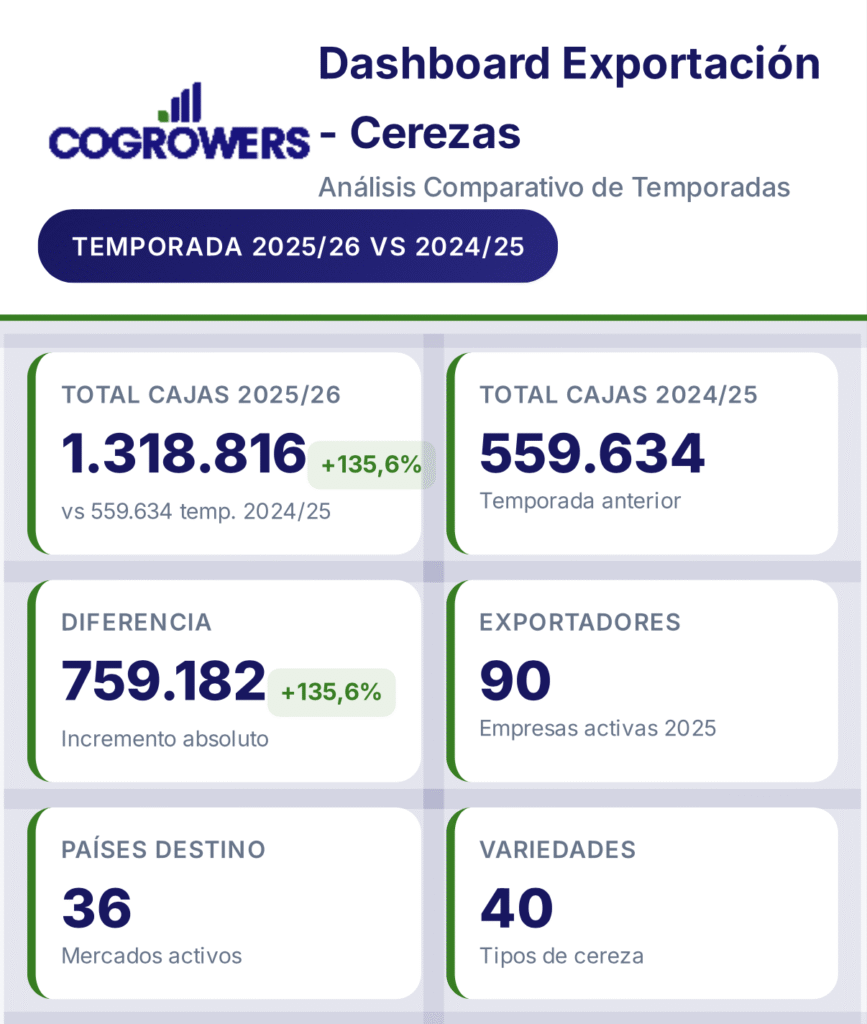For the second consecutive season we have enabled the free download of the reports on the evolution and comparison of the accumulation of cold hours. This factor is of utmost importance in the reproductive cycle of deciduous trees, especially those
cherry trees.
“The accumulation of cold hours is directly related to the use of the reserves that the trees have to start the next season in favor of the productive objective of achieving their potential in terms of quantity, quality and condition of the fruit. In this process, the plants accumulate this cold from the beginning of the physiological dormancy stage, recognized as 50 percent of leaf fall, based on the needs of each variety, since each variety has a different cold requirement,” explained Carlos Tapia, Technical Director of Avium.
While the Royal Dawn variety has a chilling requirement of 400-500 hours, Kordia needs at least 800-900 hours, based on the classic chilling hours accumulation model, i.e. below 7.2 ºC. However, beyond the differences between one variety or another, the most important accumulation must occur during endodormancy, or the central part of dormancy.
“This central stage is called endodormancy and for practical purposes it would correspond to the month of June, from June 1st to June 30th, and we should focus on the fact that in that month we should have at least 250 hours of cold accumulated in those 30 days; that is a very important factor, because coincidentally in the years of greatest potential
productive we have achieved that accumulation,” concluded Carlos Tapia.
That is why it is so important to be able to count on the data provided by the report on the evolution and comparison of the accumulation of cold hours, prepared by the Avium technical team. This document allows not only to know certain data, but also to be able to compare, make decisions for the fields, for example in the pruning strategy or nutritional strategy and make projections of what the next harvest season will be like.
“This monitoring is extremely important, and not just the final accumulation as of July 31, but it is important to see how it is accumulating monthly, even weekly, so that we have a real comparison with previous seasons and have a kind of modeling of what could happen in terms of comparisons; we can compare seasons backwards and see what the impact of the accumulation of cold weather was on production,” said Carlos Tapia, expert advisor on cherry cultivation.
The report on the accumulation and comparison of cold hours covers the months of May, June and July, which allows producers to compare this information with their own weather stations, and from this, establish correct strategies to maintain or improve the productive potential of their orchards.








